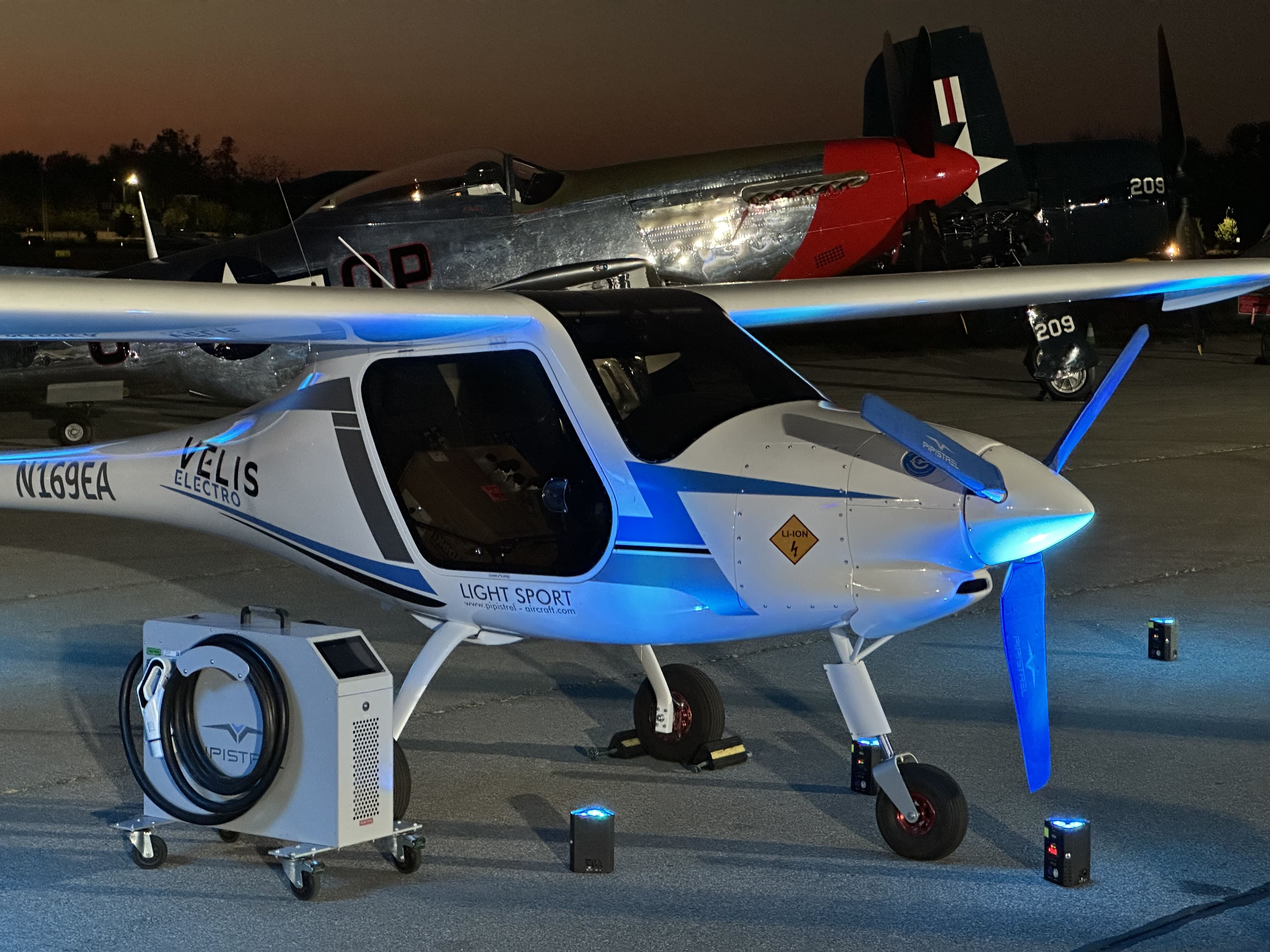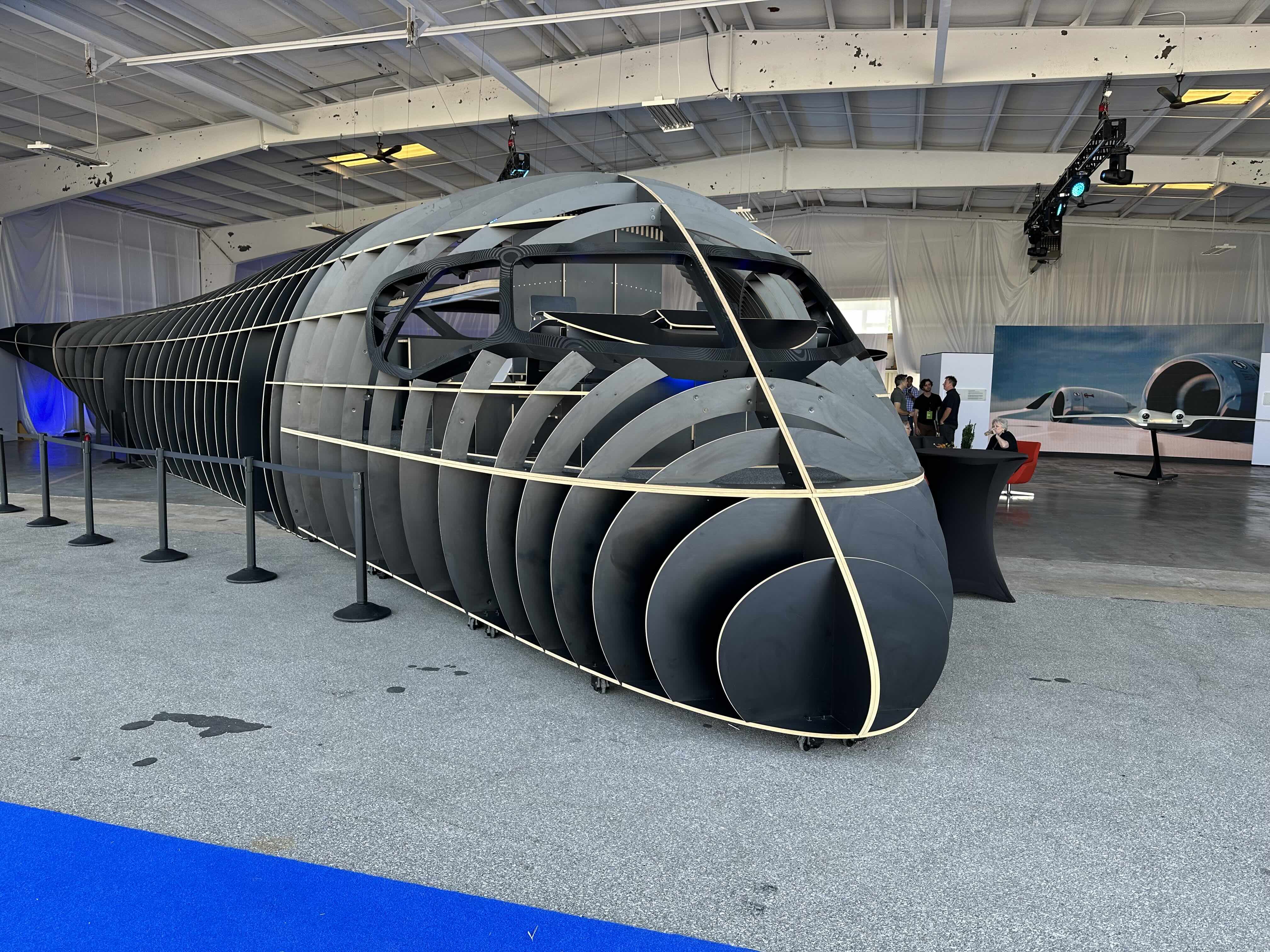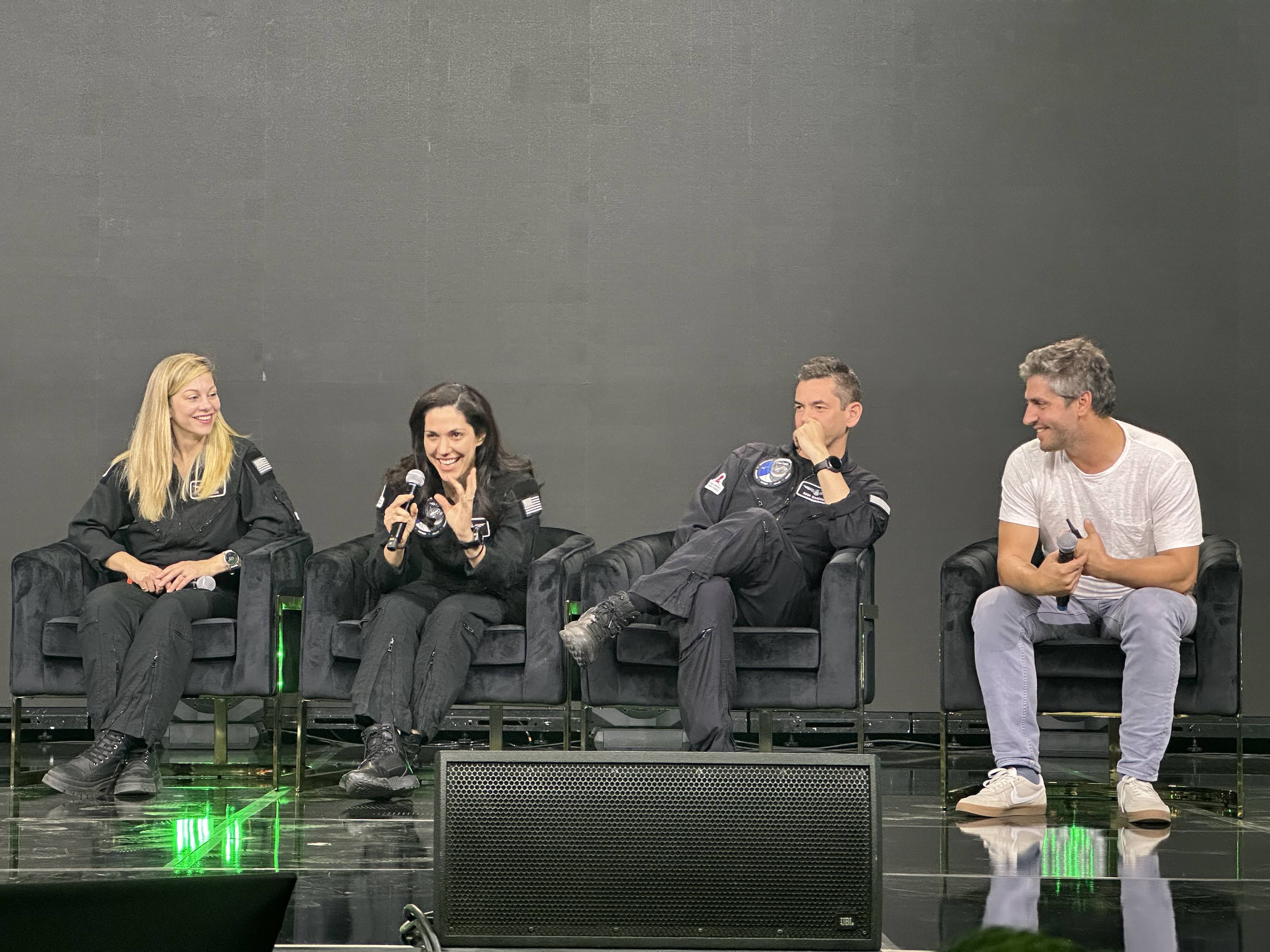Click Here to View This Page on Production Frontend
Click Here to Export Node Content
Click Here to View Printer-Friendly Version (Raw Backend)
Note: front-end display has links to styled print versions.
Content Node ID: 423358
The annual UP.Summit event held by venture capital firm UP.Partners, in partnership with Steuart Walton and Ross Perot Jr., welcomed innovation leaders to Louise Thaden Field in Bentonville, Arkansas, for three days of learning about mobility technology and to try out airplanes, electric cars and bicycles, and simulators for advanced new aircraft. Many attendees represented companies that UP.Partners has invested in, but others were invited to share their technology ideas, and the result was a mixture of technology presentations and serendipitous meetings of 300 smart and creative people that accelerated new ideas for mobility solutions.
An invitation-only event, this was the seventh year for UP.Summit, which rotates between Bentonville and Dallas/Ft. Worth. According to UP. Partners, “Investors in attendance represent over $1 trillion worth of investable capital. These are the leaders of the most impactful companies moving people and goods with a common goal of transforming the moving world by building and investing in companies that move people and goods cleaner, faster, safer, and at lower cost—on the ground, in the air, on the sea, and in space.”
A community day took place on the first day of UP.Summit, and more than 12,000 people, including many children, came to the airport to see all the technology and help break a Guinness World Record for the number of model rockets launched. With the help of the Bentonville Unified School District and model rocket company Estes, kids launched more than 6,000 rockets during the event.
A small but intimate airshow took place on the first evening of the event, after the community day, and included a warbird flyby; aerobatics with local entrepreneur Steuart Walton at the helm of his aerobatic GameBird; an incredibly quiet flight by Textron eAviation’s Pipistrel Velis Electro electric flight training airplane; two Pivotal Helix single-seat eVTOLS flown by company pilots; jet flybys in a privately owned MiG-29 and a Dornier Alpha Jet; the Slayer Jet Car powered by a Westinghouse J-34 turbine engine; and a Wing drone casually flitting about delivering packages.

At the summit, attendees were invited for flights in Game Composites’ GB1 GameBird, a two-seat composite single-engine airplane manufactured at Thaden Field and capable of unlimited aerobatics yet comfortable for cross-country flights. Advanced air mobility and next-generation aircraft manufacturers brought examples of their products and flight simulators so attendees could get a feel for how these aircraft will operate.

During the event, attendees could get behind the wheel of a Tesla Cybertruck or cool off by riding down a taxiway on a Cowboy electric bicycle or during a demo drive in a Meyers Manx electric- or three-cylinder aircraft engine-powered dune buggy.

Exhibits were a step up from typical trade shows and included a slightly used SpaceX Cargo Dragon capsule ideal for selfie photos and full-scale wooden mockups of the Regent wing-in-ground effect electric Viceroy Seaglider and JetZero’s massive blended-wing airliner. Simulators were available for the Viceroy, Pivotal’s Helix, the Boom Supersonic airliner where wannabe supersonic pilots could practice a scored landing, the Skyryse single-control fly-by-wire helicopter, Loft Dynamics’ H125 VR simulator, Teleo’s remotely operated heavy construction equipment system, and the Merlin autonomous-piloted Cessna Caravan.

“[There are] a lot of interactive experiences,” said Cyrus Sigari, UP.Summit mission commander and UP.Partners co-founder. “Go in and play, be a kid, have fun with it, learn and be inspired. Being an investor day to day is our core job, and technologies that help move people with goods—cleaner, faster, safer, lower cost, land, air, sea, space—if I break it down into the most basic language, it's helping our childhood dreams come true.”
UP.Summit kept attendees informed and entertained during the three-day event, which began each morning at 9 a.m. and on Monday and Tuesday ended at 10 p.m. after a catered buffet dinner and keynote speeches. What made the event unique was the surprise factor. Displays were dramatic and fascinating, as were presentations by exhibitors and others, including about 25 “lightning talks” that were limited to an intense and TED-like 13 minutes. Of course, TED talks are a maximum of 18 minutes long, but the concept is similar: host a stage where ideas and concepts are shared during a focused and compelling presentation, by someone who clearly has prepared intensively beforehand. During the evening sessions, keynote speakers kept attendees wide awake even though the days were long.
At certain stages during UP.Summit, Sigari would invite attendees outside to see something interesting. One example was Gravity Industries founder and chief test pilot Richard Browning, who fired up the seven turbine engines strapped to the harness he was wearing for a demonstration of his Jet Suit. At one point, he landed inside the trunk of one of the many Cybertrucks on hand to give attendees rides to and from their hotels. With two engines on each arm and three in the backpack worn by the pilot, the Jet Suit is controlled by the pilot’s arm movements. Typical flight time is three minutes, and top speed is more than 50 mph.

Flight simulators were available at almost every aircraft developer's exhibits, and during the event I was able to sample a few. I tried the Boom Supersonic landing challenge and scored an 84, so clearly more work is needed. But this did give me an opportunity to see some preliminary work on the flight deck design and Boom’s adoption of the Honeywell Anthem avionics suite.
Regent’s wing-in-ground-effect Seaglider simulator demonstrated how the craft operates in three different modes: floating, hydrofoil, and airborne but in ground effect. The Seaglider will be able to take off and land in waves up to five feet high. Because it won’t fly above ground effect altitude (half a wingspan above the water), Regent plans to seek approval under the maritime classification system, not by aviation regulators. If the simulator is any indication of how the real Seaglider flies, the craft will be simple to operate, and its digital control system keeps the pilot not only within the seagoing and flight envelopes but also away from land, where it cannot operate.

The Loft Dynamics Airbus H125 VR simulator, the first VR simulator to receive EASA approval, now includes instructor-led demonstrations of various maneuvers, led by long-time Swiss mountain pilot Gerold Biner, former CEO of Air Zermatt. After “flying” along with Biner and observing the demonstration, the student can try the maneuver. I tried this in the Loft simulator, watching as Biner put the H125 into a settling with power maneuver then recovered using the Vuichard technique. I then tried this and successfully recovered. After trying an engine-shutdown autorotation, which ended with a hard but survivable landing, I observed another of Biner’s demos, a full-down low-speed autorotation.
At a fraction of the cost of a full-flight simulator, the Loft VR device is bringing high-fidelity simulation to aircraft operators' locations instead of requiring pilots to travel to a training center. This not only saves money on training costs but also allows pilots to practice maneuvers and procedures at any time, not just during periodic training events.
A highlight of this year’s UP.Summit was the final evening’s presentation by three members of the recent SpaceX Polaris Dawn mission. On stage were Anna Menon, Sarah Gillis, and Jared Isaacman (Kidd Poteet was the fourth crewmember), sharing the experience of the five days they spent in orbit. During the journey, the crew performed the first commercial spacewalk, conducted about 40 experiments including health-impact studies, and tested SpaceX’s Starlink satellite communications system in preparation for future missions to the moon and Mars.
One of the Starlink experiments was the Polaris Dawn mission’s participation in an effort to raise money for St. Jude Children’s Research Hospital and El Sistema USA “to create the Harmony of Resilience.” Crewmember Sarah Gillis brought her violin along and played John Williams’ Rey’s Theme, accompanied by youth and professional musicians in the U.S., Brazil, Haiti, Venezuela, Sweden, and Uganda, and broadcast via Starlink. The program raised more than $260 million.

“We believe in a future where we live in a world where we are contributing to the future of human space exploration for our collective future as humanity,” said crewmember Anna Menon.